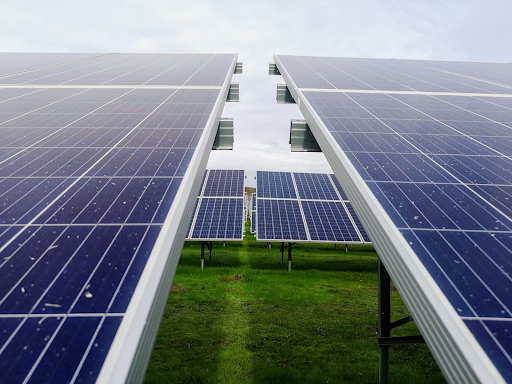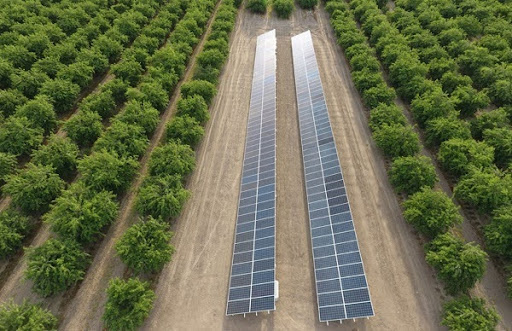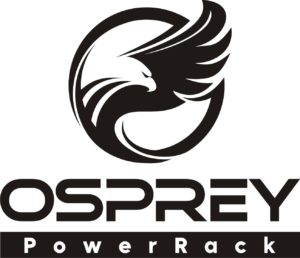Helical Foundation For Solar: Costs, Use Cases, Pros & Cons
Key Takeaways
- Helical foundations minimize environmental impact by eliminating the need for extensive excavation.
- These foundations are highly durable and can often last over 100 years.
- They are suitable for various types of solar projects, including residential, commercial, and utility-scale installations.
- The earth anchor system used by Nuance Energy as a foundation for solar panels is superior to a helical foundation due to its faster installation, lower costs, scalability, and versatility.
What Is Helical Foundation
Helical foundations, particularly helical piles, are an effective solution for supporting solar panel installations. Helical piles are steel shafts with helical plates that are screwed into the ground.
This design allows them to achieve high load-bearing capacities while minimizing soil disturbance during installation. They can be installed in a wide range of soil types and conditions, which makes them suitable for solar farms and other renewable energy projects.
| Nuance Energy is your superior solution for Ground Mount solar. Our patented foundation technology, in the Osprey PowerRack™, allows for rapid installation using only handheld tools, significantly reducing both time and costs compared to traditional racking systems. This cutting-edge technology works for residential and commercial installations, and Nuance Energy empowers solar installers to take back control of their installation schedules, control project COGS, gain market share, increase the speed of installation, and reduce costs and labor. In contrast, a traditional ground mount is much more unpredictable, slower, and costly.
Find out how Nuance Energy can accelerate your solar projects with the Osprey PowerRack™ line, and boost your profitability.
Contact us today to discuss our innovative ground-mount solutions. |
Costs Of Helical Foundation
Average Costs
- Cost Per Pier: The average cost for a helical pier, including materials and installation, is approximately $3,000 per pier. This price can vary depending on location and project requirements.
- Total Installation Costs: For most residential projects, the total installation cost typically ranges from $15,000 to $30,000, depending on the number of piers needed (usually between 5 and 10) and the complexity of the installation. In some cases, larger projects can see costs escalate to $24,000 to $60,000 or more.
* The pricing was estimated at the time of this writing and is subject to change in the future.
Factors Influencing Cost
- Soil Conditions: The type of soil can significantly impact installation costs. For instance:
- Clayey soils may require more piers due to their expansive nature – and they can be harder to drill into.
- Sandy soils generally pose fewer challenges and may lower overall costs.
- Number of Piers: Each additional pier adds approximately $3,000 to the total.
- Depth Requirements: If a deeper installation is necessary (beyond usual depths), this can increase material and labor costs.
Pros Of Helical Foundation

Helical foundation is suitable for various soil conditions and even tough terrains.
- Rapid Installation: Helical piles can be installed quickly – without curing time associated with concrete foundations.
- Versatility in Soil Conditions: These foundations can be installed in various soil types, including challenging terrains, which makes them suitable for diverse geographical locations.
- Minimal Environmental Impact: The installation process generates minimal disturbance and noise compared to traditional methods. Helical piles do not require extensive excavation – reducing the ecological footprint.
- Removable and Reusable: Helical piles can be easily removed and reused – whether for relocations or modifications.
- Durability: Made from galvanized steel, helical piles are resistant to corrosion and can withstand significant loads, including compressive, tensile, and lateral forces.
Cons Of Helical Foundation
- Limited Load Capacity: While helical piles are strong, they have limitations in load capacity so they’re less suitable for very large commercial or industrial structures.
- Challenges in Rocky Soil: Installation in rocky soil can pose difficulties as the helical plates may bend or break during installation.
- Specialized Installation Equipment Required: The installation process requires specific hydraulic equipment and skilled labor.
- Potential for Over-Engineering: In some cases, the necessity for precise torque monitoring during installation may lead to over-engineering of the foundation system, which increases costs unnecessarily.
Use Cases Of Helical Foundation
- Freestanding Solar Arrays: Helical piles are commonly used to support freestanding solar panel installations.
- Rooftop Solar Installations: For rooftop solar systems, helical anchors can be used to secure mounting structures without extensive modifications to the building.
- Solar Farms: Large-scale solar farms benefit significantly from helical foundations due to their quick installation, adaptability to different soil types, and minimal environmental disturbance.
- Battery Energy Storage Systems: Battery energy storage systems require substantial load-bearing capabilities, which helical foundations can deliver efficiently.
- Microgrids and Remote Installations: In remote locations where traditional foundation methods may be impractical due to challenging terrain or environmental conditions, helical foundations can be installed quickly with minimal site disruption.
- Seismic and Wind-Resistant Structures: In areas prone to seismic activity or high winds, helical foundations provide improved stability and resistance against lateral forces so that solar installations remain secure under extreme conditions.
- Environmental Remediation Projects: Helical piles are suitable for use in environmental remediation projects where traditional excavation may cause further contamination or disturbance to the site.
Earth Anchor Foundation By Nuance Energy

Nuance Energy uses a patented earth anchor foundation which speeds up installation.
What is Earth Anchor Foundation
Earth anchor foundation uses metal anchors driven deep into the ground to secure the solar array’s racking system. These anchors, connected to a tether cable, stabilize the solar panels by embedding firmly into the soil so they remain in place even under challenging environmental conditions like high winds or seismic activity.
Earth Anchor Technology by Nuance Energy vs. Helical Foundation
- Installation Speed: Our earth anchor system can be installed quickly compared to helical foundations, which require specialized machinery to drill and secure the helical piles. Earth anchors can be installed with hand-held tools in a single mobilization – and there’s no need to hire contractors.
- Cost Efficiency: Helical foundations are more expensive due to the equipment and expertise required for installation. In contrast, our earth anchor systems are easy to install which means lower labor costs and lower cost per watt since no heavy equipment is needed.
- Scalability and Versatility: Earth anchors are adaptable to various soil types and terrains. Helical piles face limitations in rocky or uneven ground, whereas our technology can accommodate these conditions – plus, they work for both small and large-scale projects.
- Real-Time Testing and Compliance: Our technology uses real-time testing to ensure compliance with jurisdictional requirements so contractors can easily get their projects approved. Helical piles do not have real-time testing, and as such, approval can take longer.
Frequently Asked Questions (FAQs)
How long do helical foundations last?
Helical foundations are designed to last over 100 years with proper installation and minimal maintenance.
Are helical foundations environmentally friendly?
Yes, helical foundations are environmentally friendly – the installation process minimizes soil disturbance and reduces the carbon footprint of the project.
Are helical foundations removable?
Yes, helical foundations can be removed and reused if necessary.
How are helical foundations installed?
- Site Assessment: Evaluate soil conditions and project requirements.
- Installation: Using a hydraulic drive head, the helical piles are screwed into the ground until they reach stable soil.
- Torque Monitoring: Continuous monitoring of the installation torque makes sure that each pile meets the required load capacity.
- Connection: Once installed, brackets or connectors are attached to the helical piles to support the solar panel racking system.
Is the earth anchor system used by Nuance Energy suitable for all soil types?
Yes, our earth anchor foundation system is designed to perform effectively in various soil types. You can also easily add more anchors if needed for adequate support in softer or unstable soils.
Save Time & Money on Your Next Solar Project
Request a QuoteRECENT POSTS
- DPW Solar vs Nuance Energy Mounted Solar Options: Cost & Benefits
- Geotechnical Report Cost & Requirements For Solar Projects
- Are Solar Panels Worth It In Nevada? Costs & Options
- OSPREY PowerRack Ground Mount System Compatibility: Single- and Dual-Axis Trackers
- Rammed Earth Foundation For Solar Arrays: Cost, Pros & Cons
- Agrivoltaics Explained: Solar & Agriculture Combined
- Large Scale Solar Systems Options: Pros & Cons
- Best Solar Options For Farms & Agriculture: Cost, Pros & Cons
- Unirac vs MT Solar Mounted Options: Cost & Benefits
- IronRidge vs Grengy Mounted Solar Options: Cost & Benefits

